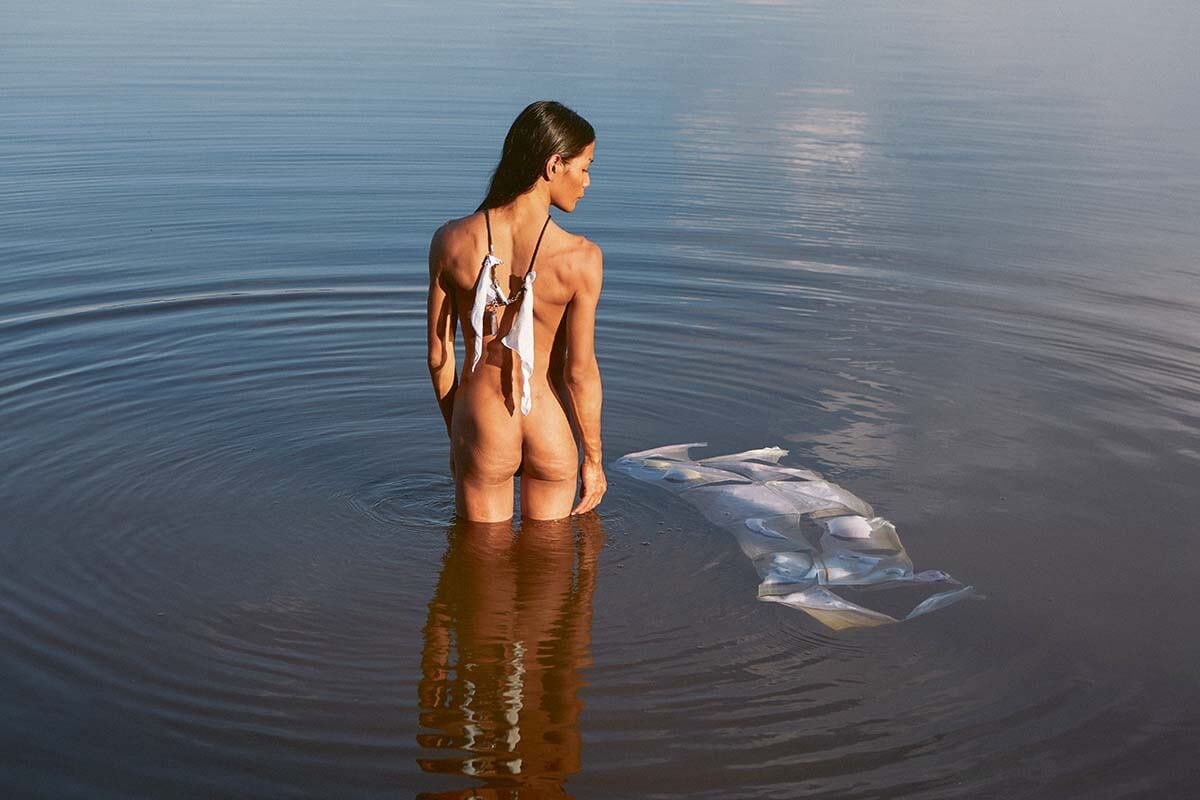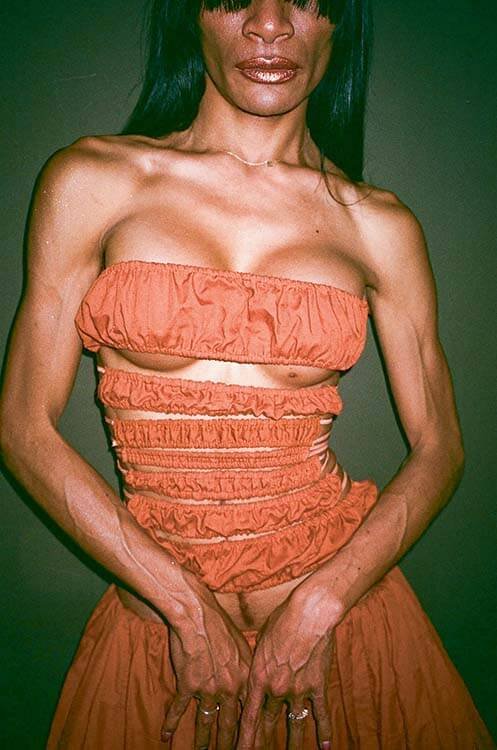Eda Phanlert Sriprom
*EDAVERSE
written Chidozie Obasi
With a bold, soulfully powerful gaze, Thailandese artist Eda Phanlert Sriprom entrances you with an artistic practice full of haunting underpinnings and spiritual layers, which are soulful and poignant in equal measure.
Hailing from Buddhist Thailand, Eda’s craft—influenced by a journey into self-discovery and desexualization—braces a potent dynamism by bringing forth a beyond-gender, spiritual approach that transcends all manner of social constructs: It’s a complete channelling of emotion that takes you through the twists and turns of her life, providing a beautifully cathartic experience. By diving deep into her history, the artist discovered details about the intellectual aspects of a garment: Replacing traditional textiles with discarded materials, reconstructing the silhouette yet preserving their original underlying philosophy, Eda challenges social norms by fashioning clothes with a wealth of identities.
(c) John Tods
(c) Sun Thapphawut
“I believe that we all must be able to express ourselves and have the freedom to speak our minds so as to the accessibility to basic human rights.”
Eda Phanlert Sriprom speaks with Chidozie Obasi
LE MILE Magazine ISSUE, Nr. 35
Chidozie Obasi
In a world where the boundaries of art and culture are increasingly commonplace, how did you manage to find the right way to express your art?
Eda Phanlert Sriprom
I only focus and try to manage and find the truthful way to express my art, the absolute truth-which has nothing to do with the right or wrong way at all. Because things could have gone so differently in case there's bad timing or you’re in the wrong place. So I don’t necessarily think there’s a right way to achieve it. For example, in Thai culture, same-sex marriage is not considered as common sense, especially when two people are not legally allowed and validated as a married couple. Or the accessibility to become a monk which is only limited and restricted to cis male. Therefore, I believe that we all must be able to express ourselves and have the freedom to speak our minds so as to the accessibility to basic human rights.
What issues lie beneath your artistic practice?
As a Trans and a Trans artist, I have been facing the identity challenge toward the society and art landscape at large. Buddhism plays a major role in terms of how I recollect myself as it is today. I find it resourceful and it could be essential to the people in our community too. I find Buddhism being a truly universal art, and Buddha a true artist. But with cultural restrictions, all religions have been used as a tool dividing people rather than uniting them. That’s why I have been trying to articulate my Buddhism practice into my artistic one. With this approach, the audiences may feel more inclusive and eventually drawn into the essential core of what I try to share, which is how we cope with suffering. On the contrary, fashion is all about vanity and it's a powerful tool in order to get yourself validation, but it could become exhausting and you keep running in circles endlessly. Quite the opposite, the combination between fashion and Buddhism makes the balance between the two, and it’s formidable.
As a multi-dimensional artist exploring all manner of media, what’s your biggest limitation? And why?
Myself, from what I want and what I don’t, and that’s because I try not to take myself too seriously and at the same time, I try to make myself more serious or, let’s say, serious enough. At the end of the day, I decided not to swim against the tide and not fly against the wind to make sure I’m balanced - not to live too far behind but not too far ahead, in order to be present.
I’m extremely intrigued by the depth and sensitivity of your photographs: which series would you say is your most intimate, and why?
The relationship between me and the Buddha is personal and intimate. Getting myself shot in a somewhat Buddhist monk uniform for the first time, by my dearest artist and beloved brother Sun Tappawuth, was exceptional. I felt the closeness yet openness all at once. I felt the present between me and Buddha aligned on that wet-plate photograph. It’s incredibly liberating.
(c) John Tods
(c) John Tods
“Buddhism being a truly universal art, and Buddha a true artist. But with cultural restrictions, all religions have been used as a tool dividing people rather than uniting them.”
Eda Phanlert Sriprom speaks with Chidozie Obasi
LE MILE Magazine ISSUE, Nr. 35
(c) Eda Phanlert Sriprom
(c) Som Nurarak
Social commentary and spirituality seem to have a firm ground in your works, but what exactly moves you in that direction when drawing a line for a concept?
I decide to do something when I can’t feel the ground or I don’t see it clearly, or even when I can’t breathe properly. It must feel wrong in order to get it right. I lost interest when I could predict the destination. For example, as I mentioned earlier, having myself dressed up and documented as the Buddha is considered a radical and sensitive subject but I decided to stand by my truth based on my loving relationship between me and the Buddha himself. The reaction from the audience was diverse, and somehow I had been sued by someone who might have felt offended but I have to stand my ground.
Would you call yours an intersectional approach to examine the arts, and the world at large?
Aren't we all different and yet we’re so similar? Does the spirit have gender? Aren’t we all trans? Am I really convinced when someone says that he’s utterly straight? Literally, aren’t we all transitioning constantly? Having said that, as an artist, we must at least be truthful to ourselves and our artistic practices - whether it’s made to examine or desert the arts and the world at large. So to speak, the arts and the world to me are as singular as life itself.
What are your hopes for the people who view your pieces for their first time?
I hope that they feel the differences as the beauty and the similarities beyond gender and that raises questions within themselves. Be critical and be at ease with who they were, who they are, and hopefully who they would love to become, whether you might or might not like the answers or the idea but this is the essential process and that’s an essential part of our transitioning life.
follow artist @ladyboil
discover online www.edaeditions.com







